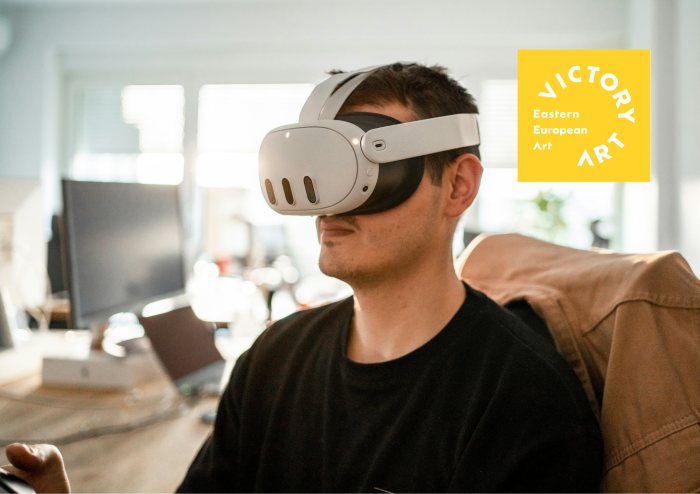MUST READ ART BLOGS
The Future of VR in the Art Industry

VR has become increasingly popular in recent years and due to the pandemic, is more prominent in the Art industry. Despite some concerns about how VR will impact the Art industry, many museums and galleries have been using the technology.
Photo by Azwedo L.LC on Unsplash
Will VR Change How We See Art?
The launch of the first commercial computer marked a cultural and sociological shift in humanity in 1951. Since then, we have watched technology permeate into all corners of human life. Not only is this process inevitable but logical too, as the leading argument behind it is that technology simply makes life easier for us all. As we cross over into our third year in the pandemic, this argument becomes even more relevant. Across the world, the digitalization of workspaces becomes a norm, even in the Art Industry. Virtual and Augment Reality (VR & AR) are being seen as the next sensible step within the industry.
However, in an industry such as the Art Industry, where the primary focus is on exploring the human condition, the existence of these technologies in these very spaces threatens to undermine that focus. So, what exactly does that mean for the Art Industry? What kind of future does VR have in the Art Industry? Well, before exploring what future VR has in the Art Industry, we must first understand what VR is.
Virtual reality can be understood as a simulated experience that can either be similar to or entirely different from the real world. Whilst AR superimposes images into the real world offering an altered version of our current reality, VR, on the other hand, offers an entirely alternative reality.
Impact of VR on Art Industry
The benefits of Virtual and Augmented Reality in a pandemic are clear. Due to Covid regulations, these technologies offer a safe way for museums and galleries to conduct business as usual as VR is becoming more and more accessible to the masses. The keyword here is accessibility which is exactly what the pandemic is challenging. Even when the pandemic becomes a thing of our past, this type of accessibility remains important for disabled people who may not be able to physically access exhibitions today.
Museums and galleries ultimately function to bring culture to the masses and VR offers a sophisticated way to do that. With VR, art lovers of all kinds can explore exhibitions in the safety of their own homes at a significantly cheaper cost. Bear in mind that to visit the Louvre, for example, the budget includes transportation and accommodation costs in one of the most expensive cities in the world. With VR, art lovers simply need to budget for VR technology and entry costs.
Other than financial accessibility, emotional access is another significant motive for having VR in the Art Industry. As mentioned before, the function of these artistic institutions is to bring culture to the masses, and through VR they can do exactly that whilst still encouraging physical visitation. With VR more people can experience Art on a more personal level without the hassle of crowding or such. VR can allow people to experience the magic of various artworks on a one-on-one basis. Obviously, VR can never compare to the real thing, however, it offers something unique which is enough to entice viewers around the world and have them curious for the 'real thing'.
Now, it was mentioned earlier that the inclusion of these technologies in the Art Industry threatens to undermine Art in general because Art explores the human condition whilst technology is commonly seen as the antonym of the human being. This may be the reason it took a few years, or rather the pandemic, for institutions to embrace VR.
Time will tell
However, the generations to come after us will grow up with technology being a norm in their reality, and this is why it is more important than ever for the Art Industry to embrace technologies such as VR. If not, the many institutions within the industry will find themselves at risk of suffering the same fate cinemas today face due to the emergence of streaming sites such as Netflix and HBO.
Whether the Art Industry likes it or not, VR has a future in it. Technology will not go anywhere and will continue to evolve with us and impact our evolution too. Therefore, the Art Industry must make space for it and embrace it. The question this leaves us with, that can only be answered with time, is how these new technologies are going to shift and impact our current understanding of art and the human condition.
VR art
What is VR art
CHECK OUT OUR BEST BLOGS
learn more about VR art

.webp)

.webp)
.webp)
.webp)
.webp)
.webp)









.jpg)